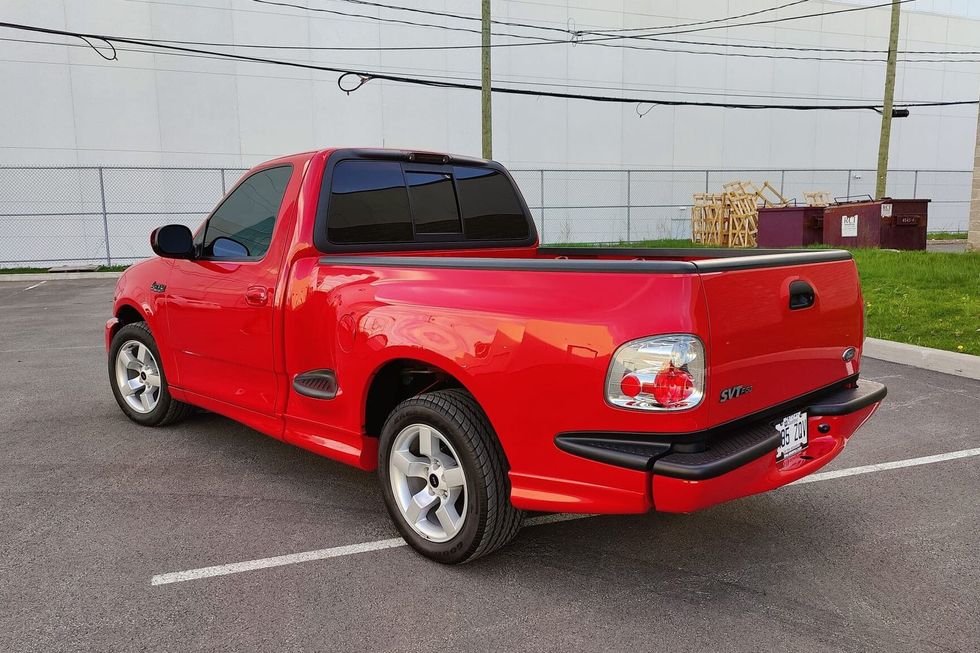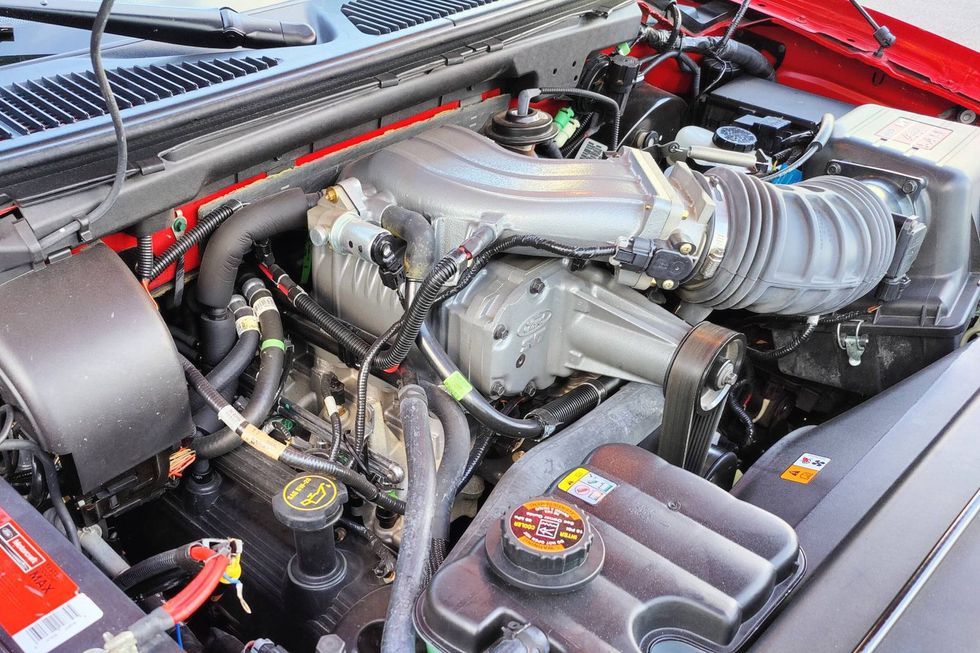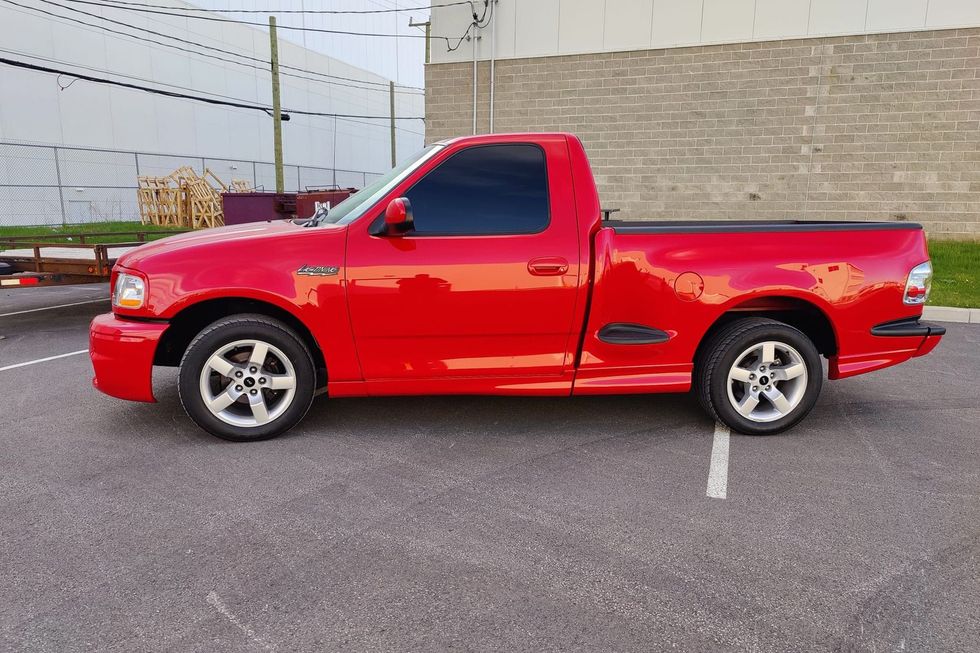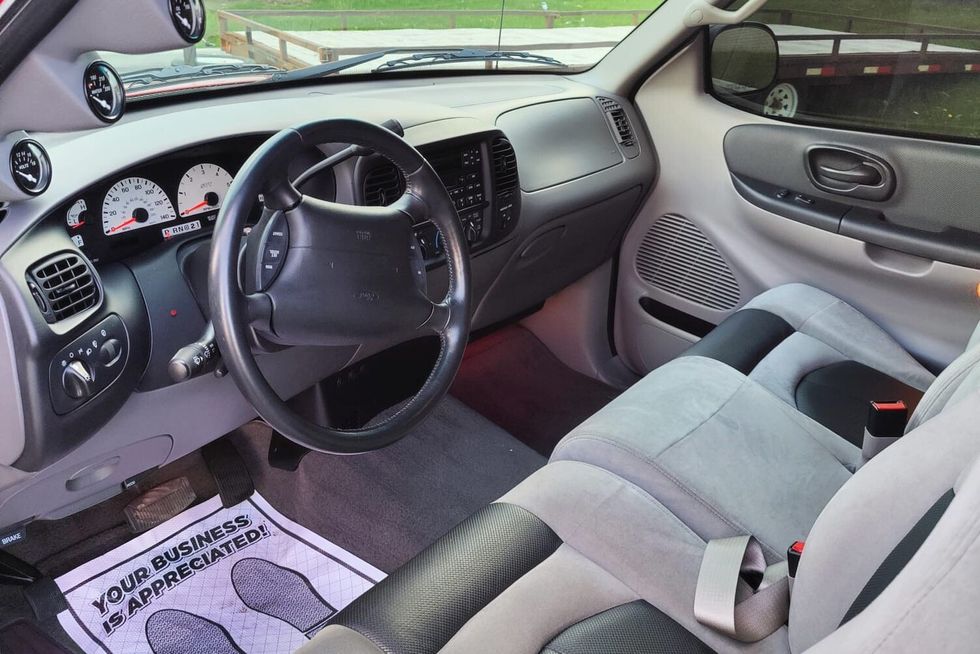Motoring Masterpiece - 1934 Buick Model 98 Victoria
With only 347 built, the Victoria-bodied 1934 Buick Model 98 is a masterwork of full-size coupe styling
11/20/2019


Compared to today's extremely limited style offerings, it's astounding how many different variations auto manufacturers presented back in the day, especially during the 1930s, when this stunningly beautiful 1934 Buick Model 98 was built.
Imagine carmakers today producing similar-looking models with four different wheelbases. And in 24 different-size body styles, no less! Yet, that's exactly what Buick did, as did nearly all the other major car companies.

For the 1934 model year, Buick offered four different lines— Series 40, with a 117-inch wheelbase; Series 50, with a 119-inch wheelbase; Series 60, with a 128-inch wheelbase; and the Series 90, with a lengthy 136-inch wheelbase. The Series 40 and 50 had five different body styles each, the Series 60 had six, and the high-end Series 90 had eight.
If that wasn't enough variety to entice buyers into Buick showrooms, there were four different sizes of valve-in-head, straight-eight engines, too. The Series 40 had a 93-hp, 233-cu.in. engine; the Series 50, an 88-hp, 235.3-cu.in.; the Series 60, a 278.1-cu.in. that made an even 100 horsepower; and the larger and heavier Series 90 models were powered by the 116-hp, 344.8-cu.in. powertrain.

Our feature car is one of the rarest Buick Series 90 models built in 1934: a Victoria coupe, of which only 347 were made. The other seven body styles were a four-door, four-passenger sedan; a seven-passenger sedan; a convertible phaeton; a limousine; and the two-door club sedan, convertible coupe, and sport coupe. The Series 90s were also the best appointed in the lineup, and therefore the most expensive, with the Victoria coupe having a base price of $1,895 (about $36,280 in today's money). Can you imagine walking into a Buick showroom today and having the option to buy either a LaCrosse or a Regal in six different body styles?
Although Buick's motto was: "When better automobiles are built—Buick will build them," another motto could have been: "When better model options are offered—Buick will build them."
Based on the five-window, two-door coupe body, what made the Victoria coupe different from the other coupes— besides its ability to accommodate five passengers via its two separate seats up front—were its front vent windows; D-shaped, sliding-glass rear quarter windows; and pronounced rear shape with integrated trunk.
Considering its large size, the car's proportions were perfect: The roof ended near the centerline of the rear wheels, giving it a much smaller appearance than its long, 136-inch wheelbase would lead you to believe. This "compact" illusion was clearly aided by the lack of side-mounted spares, which allows the eye to view the car's horizontal lines in a smooth, unbroken plane. All these design elements combined to lend this Buick an imposing, yet dignified, form, with a special elegance about it that yielded a standout shape of unmatched proportions and beauty. For this particular example, factor in its unusual bright green exterior, and the refined look of the non-distracting blackwall tires on matching green wheels, and here is an incredibly beautiful two-door prewar coupe like few others in existence. This Buick truly is a masterpiece of American automotive styling and design.

Beneath its body shell lies a stout, X-type girder frame, and a separate front crossmember designed to support the independent front suspension and Buick's new center-point controlled steering for more accurate handling. Buick called this suspension system Knee-Action Wheels, which, along with coil springs and Delco-Lovejoy hydraulic shock absorbers, permitted the use of low-pressure tires on artillery-type steel spoke wheels for a smoother ride.
The rear suspension features the combination of Delco-Lovejoy hydraulic shocks and leaf springs, plus a "Ride Stabilizer"—Buick's name for what was essentially an anti-roll bar that reduced body roll during cornering. Buick was proud of the ride it had engineered, and the 1934 brochure stated: "Around sharp curves of the Proving Ground, the new Buick ride stabilizer was thoroughly tested in action many thousands of times before it was approved by Buick engineers."
Large, vacuum-assisted, mechanically operated drum brakes front and rear provide plenty of stopping power to haul the hefty, 4,571-pound coupe to a reasonably quick stop. To help reduce vibrations, Buick's all-silent Syncro-Mesh manual three-speed transmission is cushioned on five rubber mounting points for even greater quietness.
The key to the Buick's smoothness of operation is its modern- style overhead-valve engine. As stated in its brochure: "The new Buick, like every Buick, is powered with the famous Buick Valve-in-Head Straight Eight Engine, notable the world over for power, flexibility, dependability and long life."

In the Series 90 chassis, Buick's largest engine offering featured a bore and stroke of 35/16 x 5 inches. Its single updraft Marvel carburetor was equipped with an automatic choke for easier, more expedient starting, while its crankshaft was contained in five main bearings for added smoothness. No longer was there an accessory shaft alongside the block, as the timing chain, water pump, and generator were now driven off the fan shaft. Another new feature was an adjustable ignition timing device that could be controlled by the driver from inside the car. At 3,200 rpm, maximum horsepower reached 116.
Construction of its body shell was another area where Buick excelled in its pursuit of perfection, and boasted about it in its brochures: "To determine whether this newest Buick was watertight, it was driven through the 'bath tub'—a depressed section of concrete roadway built to hold water. In that way engineers assured themselves that windows, doors and floorboards were properly sealed; they satisfied themselves that the brakes, carburetor and ignition were unaffected by this penetrating deluge."
The Series 90 Victoria coupe shown here is owned by lifelong Buick aficionado Nicola Bulgari from Rome, Italy, and resides in the collection at The NB Center for American Automotive Heritage in Allentown, Pennsylvania. A chance encounter by The NB Center's curator, Keith Flickinger, while attending a Buick show in Maryland in 2003, led to its acquisition. Although showing only 65,000 miles on its odometer at the time of purchase, the Buick was in the kind of scruffy state that meant its originality simply could not be preserved, thus it underwent an intensive body-off restoration in 2012. The restoration itself was performed entirely at The NB Center's all-encompassing restoration facility, and took two full years to complete. Every single aspect of this Full Classic Buick was executed to correct factory specifications, making it a truly authentic example of the breed.
One of the biggest challenges encountered during the car's extensive rebuild was finding a replacement cylinder head, as the original head was long gone. Through Keith's vast network of collectors, restorers, and parts suppliers, he was able to track one down after many months of searching. Aside from the plating, all work was performed in-house, including the fabrication of new rear window rubber assemblies, and the casting of front floormats; even the carpeting, headliner, and entire interior were made at The NB Center, each carefully crafted to exacting standards of absolute authenticity.
As to the Buick's distinctive and most attractive exterior color, the factory-issued shade of Moritz Green Light was applied in numerous coats of single-stage urethane enamel, but not until months of laborious bodywork, which included painstaking filing and sanding, was done to obtain perfectly smooth panels without the use of excessive body filler. The one component fitted to the Buick that wasn't on the car when originally built— but available as a factory option—was the radio.
When we asked Nicola about this Buick, he expressed admiration for his beloved Victoria. He said: "The 1934 Buick Victoria is one of the best examples of design in the early 1930s. Not only is the design great, but the color that we chose really highlights the beautiful lines of the car, which is so important to that era! Obviously, the power of the 90-series inline-eight-cylinder engine makes it a dream to drive."
Memorial Day means the start of summer, and summer is road-trip season. What better choice is there for exploring new vistas and making new memories than a full-size American luxury car from the mid-'60s? These land yachts allow you to enjoy classic style without giving up niceties like air conditioning, cruise control, and power windows and seats. They're remarkably easy to drive, too, with their big, torquey V-8s, and fully capable of keeping up with modern traffic.
Detroit's Big Three were clicking on all cylinders when they created these cars, and the task of choosing among them hasn't gotten any easier over the past 60 years. Cadillac? Imperial? Lincoln? Each has its charms, and makes its own style statement. We picked these well-preserved examples from the Hemmings Marketplace, focusing on four-door sedans for the ultimate comfort of the passengers.
Did we leave out your favorite? If so, let us know in the comments. And if you're interested in reading more about classic American luxury cars, keep a lookout for the special feature in the July issue of Hemmings Motor News.
Photo: Hemmings Marketplace






Photo: Hemmings Marketplace






Photo: Hemmings Marketplace






Forget Ford’s groundbreaking electric truck for a moment to consider this 2001 Ford SVT F-150 Lightning now offered on Hemmings Auctions. Instead of the dual permanent-magnet motors found in the current electric Lightning, the 1999-2004 SVT Lightning featured a supercharged version of Ford’s 5.4-liter “modular” OHC V8. Rated at 380 horsepower in the 2001-’04 models, it was good enough to make a stock lightning a formidable opponent on the street as well as at the strip.
A follow-up to the original 1993-’95 F-150 Lightning, which was a high-performance version of a standard F-150, the second-generation SVT super truck presented as a more thoroughly developed model with a lot more exclusive components that further differentiated it from the rest of the F-Series lineup. Beyond the engine, the entire suspension and braking system, not to mention aerodynamic body add-ons, were part of the Lightning package from 1999 through 2004. Exclusive interior components were also part of the package.
At the heart of this SVT Lightning is its iron-block 5.4-liter SOHC, 16-valve V8 with a supercharger and an intercooler. The blower helped it deliver 380 horsepower and 450 lb-ft of torque in 2001, up some 20 horsepower and 10 lb-ft from the ’99 and 2000 models. The Eaton supercharged engine delivered peak boost of 8.0 psi and the engine featured an 8.4:1 static compression ratio, down from the standard 5.4 V8’s 9.0:1, which was rated at 260 horsepower and 350 lb-ft.
Power reached the rear 18-inch cast aluminum-alloy wheels via a four-speed automatic, an aluminum driveshaft and a beefy 9.75-inch, limited-slip rear axle with an acceleration-friendly 3.73:1 final-drive ratio, another upgrade for 2001. Car and Driver magazine reported a 0-60 mph time of 5.2 seconds and a quarter-mile in an E.T. of 13.8 seconds at 104 mph—impressive numbers for a 4,600-pound truck. Top speed was a drag-limited 142 mph.

Trucks generally require a suspension that can handle a full load in its bed while also providing competent driving while empty. But if you fancy one designed to a sports-car standard, then something has to give. In the case of the second-gen Lightning, Ford dropped its payload capacity to a mere 800 pounds. A standard 2001 F-150 Styleside carried a 3,180-pound payload rating, while an F-150 Flareside was rated at 2,005 pounds, some two-and-a-half times the Lightning, which featured the short-bed Flareside body. Towing capacity, likewise, was reduced from 8,800 pounds to 5,000 in the Lightning. But the Lightning’s strengths were never its payload or towing capacities, but it’s ability to perform like a sports car.
As a 21st century performance vehicle, however, the second-gen Lightning was also equipped to handle. A half-inch drop at the front was accompanied by SVT-specific coil springs and Bilstein shocks along with an exclusive 31-mm solid anti-roll bar. SVT’s influence continued at the rear with Lightning-specific five-leaf springs and a 23-mm solid anti-roll bar. The Bilstein setup at the rear included the right-rear shock staggered toward the front of the truck to reduce axle hop under heavy acceleration. The four-wheel antilock disc brakes were cribbed from the three-quarter-ton F-250, with 12.1-inch front rotors at the front and 13.1-inch discs at the rear.

As the years go on, fewer and fewer clean, unmolested low-mileage examples are out there, which is why this 2001 Ford SVT F150 Lightning now on Hemmings Auctions caught our attention. Showing just 5,525.5 miles on its odometer at the time of submission, it is said to be in “mint” condition and have an “immaculate” finish in the seller’s words. No modifications are noted to any part of the vehicle. The 18-inch factory alloys don’t appear to have any curb rash, though the Goodyear performance tires may be original. About the only deviations from stock are the tinted windows.
The latest electric-only F-150 Lightning is certainly a quick vehicle in its own right, but this 2001 edition from the engineers at SVT was built for excitement, not range. It was made with an old-school muscle-car vibe along with modern handling and braking. Which Lightning would you look good behind the wheel of?
Take a look at this second-gen Lightning on Hemmings Auctions before the bidding ends.
